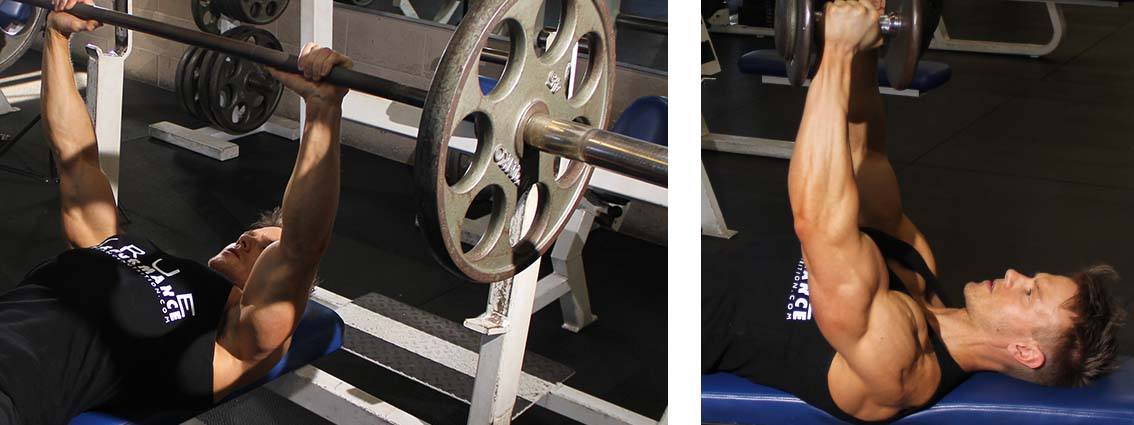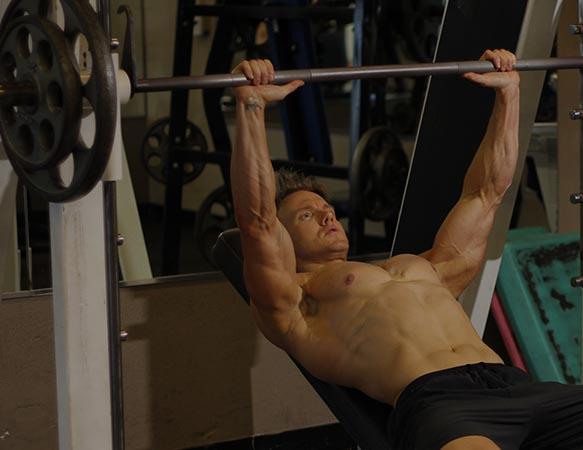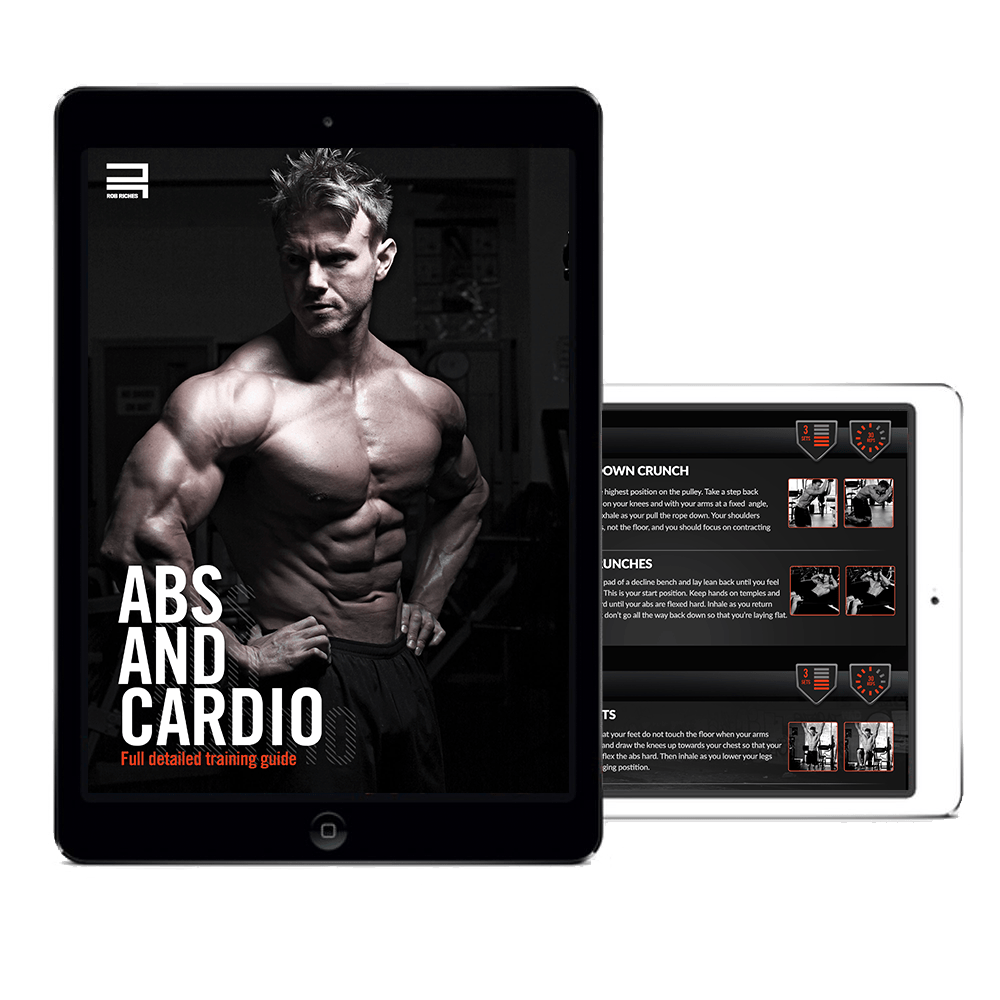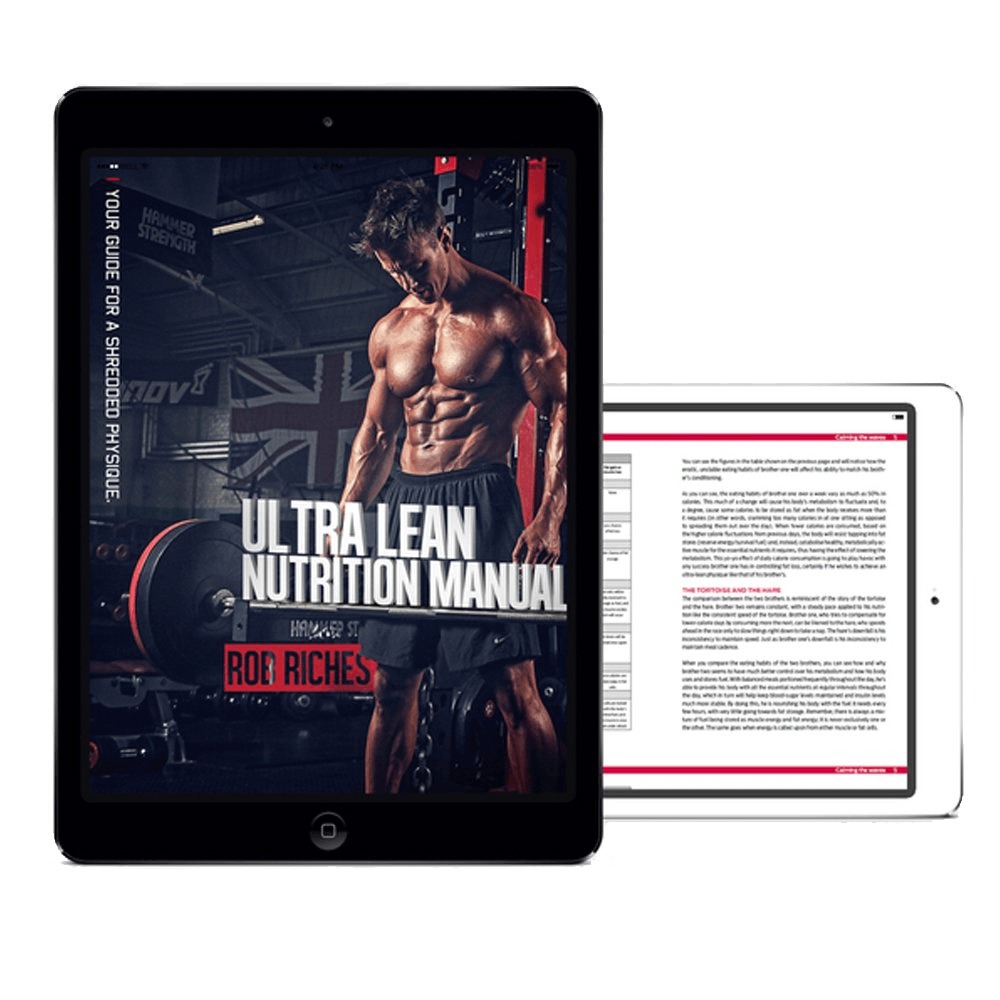Try following one of my personal favorite chest workouts
June 15, 2018
Developing a strong, well-proportioned, and balanced chest, was always strong focal point for me when I first began lifting weights.
The exercises shown within this program are the ones that I would follow when I was only training the chest muscles within my workout. For some it may seem like a lot of exercises, but I knew by training the chest from a variety of different angles, types of movements, and range-of-motions, that I would bring about the greatest development.
This routine isn’t necessarily aimed at growing your chest to be as big as possible, or getting as strong as you can. It’s more of an ‘all-round’ chest routine that covers all the basic movements, and allows for numerous variations and progressions over time, which means stagnated workouts shouldn’t be something you’ll ever have to worry about for this program.

← Have You Seen This?
In need of an extra boost to your training? Check out my free Abs Guide, and Ultra Lean Nutrition Manual
Hitting The Basics First
Ever since I first started weight lifting, I was encouraged to make use of free-weight exercises, like the bench press, and incorporate these early within my workout when I had the most energy and strength (after warming up the muscles and joints first with several light sets and some mobility exercises).
With free-weights, I found it wasn’t simply just about loading as much weight as you could lift. It was about being in control of the movement, and really focusing on the muscles being used. The standard 2-seconds down, 1-second up rule has always been something I’ve typically followed, with a real focus on contracting and squeezing the muscle at the top of each rep.
Free-Weights or Machines
You’ll see in the routine below that I incorporate a mixture of free-weights, machines, cables, and even body-weighted exercises. Variety is important for a well-rounded program and also helps your workout sessions from always revolving around the same types of exercises and movements. If you’re not comfortable using free-weights, then start with the machines and cables, but don’t neglect the free-weights. Practice your form and technique (as well as your body positioning – especially feet when it comes to lifting, even when your back is on the bench). Focus your breathing, tempo, and balance. Ask a friend or a trainer to look over you and spot you if need be. Your goal when first starting out should be to master the free-weights.

Weaker Sides & Muscle Imbalances
Very few people that I’ve seen have near perfect symmetry and proportions on their left and right side of the body. I don’t, and it’s something that I’ve been aware of since day one of training, which has helped keep me focused on my overall proportion and muscle balance rather than just trying to simply get as big as I could. The first thing I would tell you is not to get too hung up on it, and focus your energy on the types of exercises and movements that will help you even out imbalances. This can be different for each and every one of us.
If you always rely on the barbell (free-weights or machine), or exercises that follow a fixed-range of motion using both arms, then you’ll probably not be aware of any imbalances. Incorporating uni-lateral movements (that require your left and right arm to operate independent of each other and not at the same time – such as performing a barbell bench press), then you’ll soon notice if you have a more dominant side. This doesn’t mean you need to add more weight or reps to the weaker side, but by simply adding such movements into your workout will ensure that the dominant side won’t always be doing more of the work. Uni-lateral exercises (dumbbell flys, uni-lateral hammer-strength equipment, and dual-cable chest movements) will ensure the weaker side will have to work just as hard as the stronger side does. Give it time and your weaker side will soon start to catch up.
Rest Times, Workout Times, & Tempo
There can be many ways that a written workout program can be perceived, especially if there isn’t much information besides the exercises and set/reps. This is why I love to include videos within each of my programs to show more of the bigger picture. With that said, I will say this about following programs, especially the ones you’ll find on my website: Use them as guidelines. These are not cookie-cutter workouts, and each one of these are workouts that I’ve performed myself and wanted to share them because of how effective I felt they were.
These are my general thoughts when it comes to the actually following the workout:
- Warm up the muscles and joints first with a simple circuit of 2 or 3 exercises (from the routine below)
- Once warmed up, build up to your heaviest weight you can manage by the 3rd set of the first exercise
- Rest times don’t need to be strictly set or followed, but be aware of the time that passes before you perform your next set. This tends to increase for me the harder I work, so long as I don’t lose my focus towards the next set
- I like a faster workout pace over a slow one. My best workouts are often when I’m short on time and am fully committed to getting my exercises done without wasting any time. It also gives me a much better pump
- The speed at which you perform each movement can be as much as personal preference as it can the time you choose to workout. I’ll often change my tempo up on different workouts to see which approach leaves me feeling as though I had a better workout. Typically this means a slower, controlled descent of the weight, a slight pause at the bottom of the rep, and a quicker, more explosive tempo when pushing the weight back up

Exercise 1
FLAT BENCH PRESS*
4 sets of 12, 10, 8 reps, (final set perform as strip-set)
Exercise 2
DUMBBELL OVERHEAD EXTENSION
4 sets of 12 reps
Exercise 3
INCLINE SMITH MACHINE PRESS*
3 sets of 12,10,8 reps
Exercise 4
SEATED MACHINE FLYS
3 sets of 15,12,10 reps
Exercise 5
INCLINE DUMBBELL FLYS*
3 sets of 12, 10, 8 reps
Exercise 6
WEIGHTED PARALLEL BAR DIPS
3 sets to failure
*(Performed as a super-set exercise with following exercise)
2 Comments
Comments are closed.




Hello. I have checked your robriches.com and i see you’ve got some duplicate content so probably it
is the reason that you don’t rank high in google.
But you can fix this issue fast. There is a tool that rewrites articles
like human, just search in google: miftolo’s tools
robriches.com is fantastic, i will come back here for sure